Mike Royko 50+/- Years Ago Today: The Birth of High-Rise Man
The Life and Death of High-Rise Man, Part Two
To access all site contents, click HERE.
Why do we run this separate item, Mike Royko 50+ Years Ago Today? Because Steve Bertolucci, the hero of the serialized novel central to this Substack, lived in a Daily News household—meaning the Bertoluccis subscribed to the Daily News. Back then everybody read the paper, even kids. And if you read the Daily News, you read Mike Royko.
This is Part Two of a seven-part series on Mike Royko’s High-Rise Man columns mocking wealthy lakefront Chicagoans, and the life that led him to write those columns.
Part One: The Ascent of Royko traces Mike’s early life through the homes he lived in—and the life, in those homes, that led Royko to mock wealthy lakefront Chicagoans in 15 columns spanning almost 20 years. Mike called this new species of well-to-do Chicagoans “High-Rise Man.” Then, in 1981, he surprised everyone by moving to 3300 N. Lake Shore Drive.
Here in Part Two, we’ll look at the beginning of Mike’s High-Rise Man columns, taking time to savor two of the most essential.
See “Read the Rest” at the end for links to the rest of the series.
The Life and Death of High-Rise Man:
Part Two - The Birth of High-Rise Man
As we saw in Part One, Mike Royko grew up in a hardscrabble first-generation immigrant household. A quick recap:
As both Mike’s biographers note, Mike Royko Sr. was literally born in a potato field outside Lvov as his mother labored in every way possible, and by age nine he’d followed her to Chicago and started working odd jobs in South Side steel mills.
Little Mickey Royko was doted on by his mother and two older sisters, but life was not a bed of roses in their series of flats around the still largely Polish Milwaukee Avenue corridor of the Near Northwest Side during the 1930s and 40s. Mike Royko Sr. had grown into a hard-drinking man who eventually brought an end to his marriage after kicking wife Helen hard enough to break her ribs.
After his parents split, Mickey bounced between their separate homes, and then between high schools until he ended up in the Montefiore reform school. He dropped out at 16, later earning his high school degree at the downtown Central YMCA.
By his own account, young Mike set pins at the Congress Bowling Alley, played dice in the alley out back with the local winos, and helped bartend at his dad’s Southwest Side bar. Later he volunteered for the Air Force during the Korean War, training as a radio technician.
Though Royko wasn’t a combat soldier, according to Doug Moe’s “The World of Mike Royko,” “The truth is Royko was often in harm’s way in Korea.”
One of his service roommates, Don Karaiskos, told Moe that Mike talked little about his Korean experiences. “He never talked about the war in philosophical terms. But he was a forward air controller….It was a rather hazardous thing. They would go out in front in a jeep and call in on the radio strikes from the air.”
Ciccone quotes Royko:
“I was issued a carbine, and I said, ‘What the hell is this for? I’m a technician.’” Royko’s combat experience was limited. “One night they hit a point in the fence close to where I was. We shot at them. They shot at us. One of them was killed and a half dozen wounded.” Royko never claimed he shot anyone.
Mike was in Korea for only about six months due to the signing of the Korean Armistice. He married his childhood sweetheart, Carol Duckman, after the Air Force transferred him back to the U.S. As Mike started his newspaper career, the young couple began raising two sons while living on the third floor of Carol’s family’s ancient rambling Victorian home in Jefferson Park.
They’d finally be able to afford their own modest home in 1969.
Don’t miss the news from 1972, week by week! Start with the first post here.
High-Rise Man Appears
In 1967, four years into writing his column for the Daily News, and still living on the top floor of his in-law’s home with his wife and two young sons, Mike Royko discovered a new species of privileged Chicagoans.
That year, 1967, was firmly planted in the post-World War II economic boom. America’s exploding prosperity lasted almost 30 years, grinding to a halt in the early 1970s. The boom created a burgeoning middle and upper middle class in numbers never seen before.
While the post-war boom enabled an urban exodus to the suburbs on brand-new expressways, the remaining urban social elite flocked to modern high-rises popping up along Lake Shore Drive.
Mike would report on or mention High-Rise Man four times at the Daily News, ten times during his Sun-Times years, and once at the Tribune. And as noted in Part One, in 1981 Mike would surprise everyone by moving in among High-Rise Man at 3000 N. Lake Shore Drive.
The name “High-Rise Man” harkened back to the famed “Piltdown Man” fossils* “discovered” in an English gravel pit in 1912. Piltdown Man was believed to be the “missing link” between apes and humans, until modern testing showed the skull fragments were faked.
High-Rise Man as a species included members of Mike’s own Silent Generation, born approximately from the late 1920s to early ‘40s, and the older successful Baby Boomers later more widely known as “yuppies”—Young Urban Professionals.
February 20, 1967
Mike first described “High-Rise Man” on February 20, 1967, starting this stellar column by reprinting an entire letter from a Lake Shore Drive high-rise building manager to building tenants.
“Dear Tenant,” the letter began. “We have been receiving numerous complaints on the misuse of the lobbies by adults as well as children. We must ask, therefore, that ‘Lobby Sitting’ be discontinued.”
The manager pointed out building rules allowed public space use only for “ingress and egress to and from the respective rooms or apartments.”
The lobby sofas and chairs were there to “enhance” the lobby, per the letter. Residents could use the furniture “for the FEW MINUTES” necessary to wait for a cab.
An angry resident had sent the manager’s letter to Mike. She insisted the manager was targeting the building’s elderly, who socialized in the lobby during Chicago’s then-recent Great Blizzard of 1967.
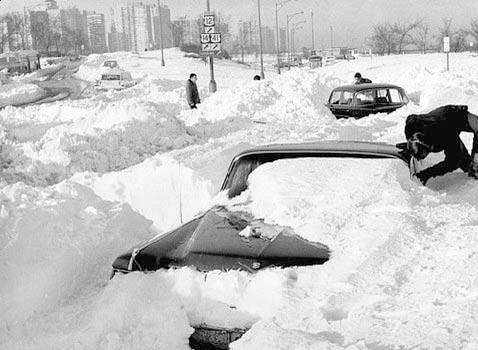
Starting around 5 a.m. on January 26, 1967, snow had fallen steadily for over 24 hours. The blizzard buried the city under its highest ever recorded snowfall, 23 inches.
“Helicopters were used to deliver medical supplies to hospitals, and food and blankets to stranded motorists,” the National Weather Service explains. “Expectant mothers were taken to hospitals by sled, bulldozer and snow plow.”
So it makes sense that the high-rise building’s elderly stayed in for a few days. They passed some time visiting in the lobby.
In a classic Royko column strategy, Mike claimed he didn’t agree with his outraged reader. Mike said he couldn’t get angry about the manager’s letter. He understood why some people probably complained about the lobby gatherings.
“Life just happens to be different in a high-rise than, say, in a bungalow or three-flat neighborhood.
“And High-Rise Man sees things—himself included—in a different way.
“High-Rise Man is like his building—soaring, lean, modern, gracious, cool, handsome, push-button, filter-tipped, a symbol of today and today’s young, caloric-free living.”
High-Rise Man was nothing like Bungalow Man or Three-Flat Man, Mike pointed out.
“We think of ourselves as kind of squat, pot-bellied, ordinary, brick, mortar, sidewalks-by-WPA*—just like the real estate.
“The sight of old people is not offensive to Three-Flat Man or Bungalow Man because even when he is young, he thinks he is getting old.
“Besides, old people are part of Three-Flat Man’s world. They’re always there, sitting on the front steps, watering a lawn, water a dog, taking a walk for the paper, complaining about somebody’s punk kids.
“But when High-Rise Man and his High-Rise Mate step out of the cab, nod to the doorman’s respectful greeting, and stride through their lobby, it can be jarring—shocking—to see a bunch of old people sitting around, dozing, knitting, cackling or even, heaven forbid, coughing.
“Not in their lean, young, soaring world.”
*sidewalks-by-WPA references the “Work Progress Administration,” a key part of President Franklin Roosevelt’s New Deal to help pull the U.S. out of the Depression by putting millions of unemployed Americans to work. While the WPA included arts and culture-oriented sections like the Federal Writers’ Project—which employed Chicago writers including Studs Terkel, Nelson Algren, Saul Bellow, Gwendolyn Brooks, Studs Terkel and Richard Wright— it’s better known for labor-intensive projects like building roads and sidewalks.
Chicago’s current New Street Construction Program replaces WPA streets, which are “without curbs and gutters or a concrete base”. WPA streets often didn’t include sidewalks either. In 2019, WBBM-TV news reported that Chicago still had 75 miles of unimproved WPA streets. The WPA did build sidewalks, but I don’t see a number on remaining WPA sidewalks. Here’s a list of surviving WPA projects in Chicago from the “Living New Deal” site. The Julia Bachrach Consulting website posted an interesting piece, “Boon or Boondoggle? WPA Craft Workers in Chicago’s Parks,” in 2020, including this picture of WPA workers laying a sidewalk in Washington Park, circa 1938:

August 11, 1967
Mike’s next High-Rise Man column on August 11, 1967 considers the new urban hobby of dropping rocks and chunks of concrete off buildings, Chicago River bridges, and expressway overpasses—onto pedestrians, boaters and cars.
“People may have to start wearing hard-plastic fedoras and bonnets if High-Rise Man and Expressway Man and their mates are to survive in the New Stone Age,” writes Mike. “There have been times when a dozen cars with shattered windshields and pierced convertible tops have been strung along the shoulders of the Eisenhower.”
January 5, 1968
Mike returned to the underlying concept of High-Rise Man for a classic column on January 5, 1968, though he substituted the term “Chicago Man.”
Mike opens “Chicago Man” in a classic Royko one-sentence lede:
“It has finally happened, damn it.
“A decent, pot-bellied working man’s city is now wearing a turtleneck sweater, long sideburns and a suave look on its face.”
Mike knows this from talking to merchants like Leon Carteaux, a Loop jeweler, about the recent Christmas season. They all tell Mike the same thing: Chicagoans went upscale in their gift-giving:
“‘It’s been different this year,” Carteaux tells Mike. “Those who used to shop for costume jewelry wanted something in good gold; those who weren’t accustomed to quality were asking to see the better items.”
“A town that used to think that six cylinders and a stick shift belonged to a thinking man has put on an imported Irish woolen cap and is zipping around in a pseudo sports car,” Mike laments.
“It’s wearing a razor-cut hair style for $6* and is gobbling up French food faster than the restaurants can overprice it.
“Chicago Man has become a dandy right out of the ads…Chicago Woman defies description, with her thighs stylishly bared to 30 m.p.h. arctic winds, while her torso is wrapped in an artificial Abominable Snowman fur coat.”
*That $6 razor haircut would cost $57.93 in 2023, still quite pricey for men. I see the Chicago Barbershop at 2154 W. Armitage—once solidly among Mike’s working class Milwaukee corridor neighborhoods, now solidly gentrified—charges only $35 for a haircut, $60 for “haircut with straight razor beard trim.” Take a gander at the Loop location of State Street Barbers—175 W. Jackson:
But even a haircut in the vintage splendor above would cost $45 tops in 2024.
The big spending was everywhere for the 1967 Christmas season, per Mike.
“Did we really need that $86,000,000 Civic Center more than a few other things?” he asks. “The city can’t get real estate developers even to think about low-cost housing.”
By “Civic Center,” Mike means today’s Daley Center and Plaza—aka the place with the big Picasso.
“It is not a paint-flecked pants town any more,” writes Mike. “The city of the three-flat with flowered wallpaper and linoleum in the parlor, the lunch pail, the shot-and-beer and count-your-change, has become something else: San-Fran-York on the Lake.
“Tomorrow is Carl Sandburg’s birthday. You remember him. He was named after a high-rise development.” That’s a joke son, as my (Silent Generation) Mom would say.
Carl Sandburg, of course, wrote “Chicago,” one of the most famous poems about the city. It opens with these immortal lines:
Hog Butcher for the World,
Tool Maker, Stacker of Wheat,
Player with Railroads and the Nation's Freight Handler;
Stormy, husky, brawling,
City of the Big Shoulders:
You name it, Carl Sandburg did it—from laying bricks to reporting for the Chicago Daily News, including a searing book-length look at the infamous 1919 race riot. Sandburg wrote poetry volumes, an acclaimed biography of
Abraham Lincoln, and he collected American folksongs for his 1927 “American Songbag.” He sang the folksongs himself too, playing his own guitar.
When Mike writes “He was named after a high-rise development,” he means Sandburg Village, still standing in 2023 as condos. Sandburg Village began as a 1960s urban renewal project which required bulldozing everything between Clark and LaSalle, from Division to North Avenue. As Sandburg Village construction progressed, newspapers sometimes chronicled the sorrow of locals as their beloved ancient taverns and homes disappeared.
It’s hard to imagine that Carl Sandburg would have wanted his name associated with the place. Hence, Mike’s acidic tone: “He was named after a high-rise development.”
Mike wraps this column with one of his masterpieces, below, which I for one would put up against that Picasso any day of the week. Me, I’d say this reworking of Carl Sandburg’s pièce de résistance reflects Mike looking sideways at an emerging and future affluent city where, he feared, too many people would know a sterile high-rise development better than their own heroic hometown poets.
Was Mike correct, then or now? Discuss.
Incidentally, it’s odd that the Daily News spelled “high-rise” as “hi-rise” in the poem, since the paper didn’t follow the Tribune’s strange simplified spelling invented by Trib owner and publisher Col. Robert McCormick. The Colonel died in 1955 but didn’t lose his grip on the paper for at least another 20 years.
You can read the entire “Chicago Man” and “High-Rise Lobby” columns in Mike’s 1968 collection, “I May Be Wrong, BUT I DOUBT IT!” They’re the first two columns in the book, with “Chicago Man” re-named “San-Fran-York on the Lake,” and “High-Rise Lobby: The Old People Just Don’t Fit In” renamed “No People Need Apply.” “High-Rise Lobby” is also included in “For the Love of Mike: More of the Best of Mike Royko,” on page 89, with its original title.
Mike’s ensuing High-Rise Man columns sometimes focused on young specimens who were unaware that, say, air conditioning was a new modern luxury, and that older people like Mike had actually grown up without AC or anti-perspirant…
…or the plight of High-Rise Man in the wake of 1979’s Hurricane David, when sources for then-illegal marijuana dried up.
Then, on November 5, 1981, Mike’s High-Rise Man columns smashed right into Mike’s Walter Jacobson columns, with fateful consequences.
Walter would change the course of High-Rise Man history.
READ THE REST!
Part One: The Ascent of Royko
We trace Mike’s hardscrabble early life through the homes he lived in—and the life, in those homes, that led Royko to jeer wealthy lakefront Chicagoans in 15 columns spanning almost 20 years. Mike called this new species of well-to-do Chicagoans “High-Rise Man.” Then, in 1981, he surprised everyone by moving to 3300 N. Lake Shore Drive.
Part Two: The Birth of High-Rise Man [You Are Here]
Mike discovers “High-Rise Man” and names the species. Columns ensue, including two all-time Royko classics.
Part Three: Mike and Walter and Insults, Oh My!
Mike’s High-Rise Man column on November 5, 1981 slams headlong into his lengthy feud with top Chicago TV news anchor and commentator Walter Jacobson. Here’s an initial look at Walter—and Mike and Walter—so the November 5 column will make some sort of sense to you.
Part Four: November 5, 1981
Mike’s November 5, 1981 column appears to be a very hot take on the independent lakefront liberals of the 43rd Ward, especially Ald. Marty Oberman and his constituent Walter Jacobson. But it’s really about Richard M. Daley’s successful 1980 campaign to move up from state senator to Cook County State’s Attorney. We’ll give you a backgrounder on the politics and examine the sizzling November 5 column. Careful not to burn your fingers.
Part Five: The House on Sioux Leads to Lake Shore Drive
Mike and his first wife Carol moved their young family into a darling house in Edgebrook. That house encapsulates why Mike would always identify with poor and working class Chicagoans, and scoff at wealthy lakefront residents as “High-Rise Man.” Mike’s departure from Sioux Avenue shows us what always made him tick—and finally drove him to a big condo on Lake Shore Drive.
Part Six: Walter Strikes Back
Walter Jacobson struck back soon after Mike’s November 5, 1981 column, instigating a monumental front-page Royko High-Rise Man column on November 22 that doubles as a 1980s Chicago time capsule—and essentially ended the High-Rise Man concept. Here, we prepare for that moment of truth by examining how the paths of Mike and Walter crossed and re-crossed through the middle decades of the 20th century—and finally observe their biggest collision.
Part Seven: The Last High-Rise Man [Coming]
Because there’s so much fascinating material to cover in Part Six leading up to Mike’s November 22, 1981 column answering Walter Jacobson, that 1980s time capsule of a column gets its own post here.
High-Rise Man Addendum: Bill Granger Weighs In [Coming]
A few months after Mike and Walter’s dust-up, Tribune columnist Bill Granger revisited the issue in his own indelible way. To Granger, the question is: Does your past world disappear? You know what Faulkner said. Granger covers this age-old debate from a Chicago perspective.
Can’t get enough Royko? Delve into the whole section. That’s where we go through Mike’s 1972 columns week-by-week, giving political, historical and pop culture background so younger and future readers can fully appreciate all the references and jokes. START HERE.
By the way, this feature is no substitute for reading Mike’s full columns. He’s best appreciated in the clear, concise, unbroken original version. Our purpose here is to give you some good quotes from the original columns, plus the historic and pop culture context that Mike’s original readers brought to his work. Sometimes you can’t get the inside jokes if you don’t know the references. Plus, many iconic columns didn’t make it into the collections, so unless you dive into microfilm, there’s riveting work covered here you will never read elsewhere.
If you don’t own any of Mike’s books, maybe start with “One More Time,” a selection covering Mike’s entire career which includes a foreword by Studs Terkel and commentaries by Lois Wille.

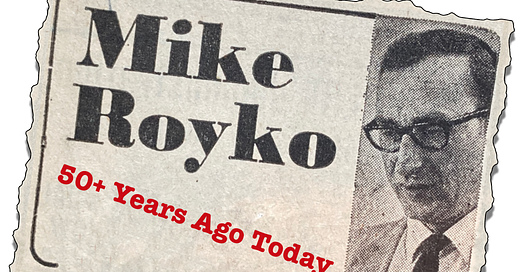



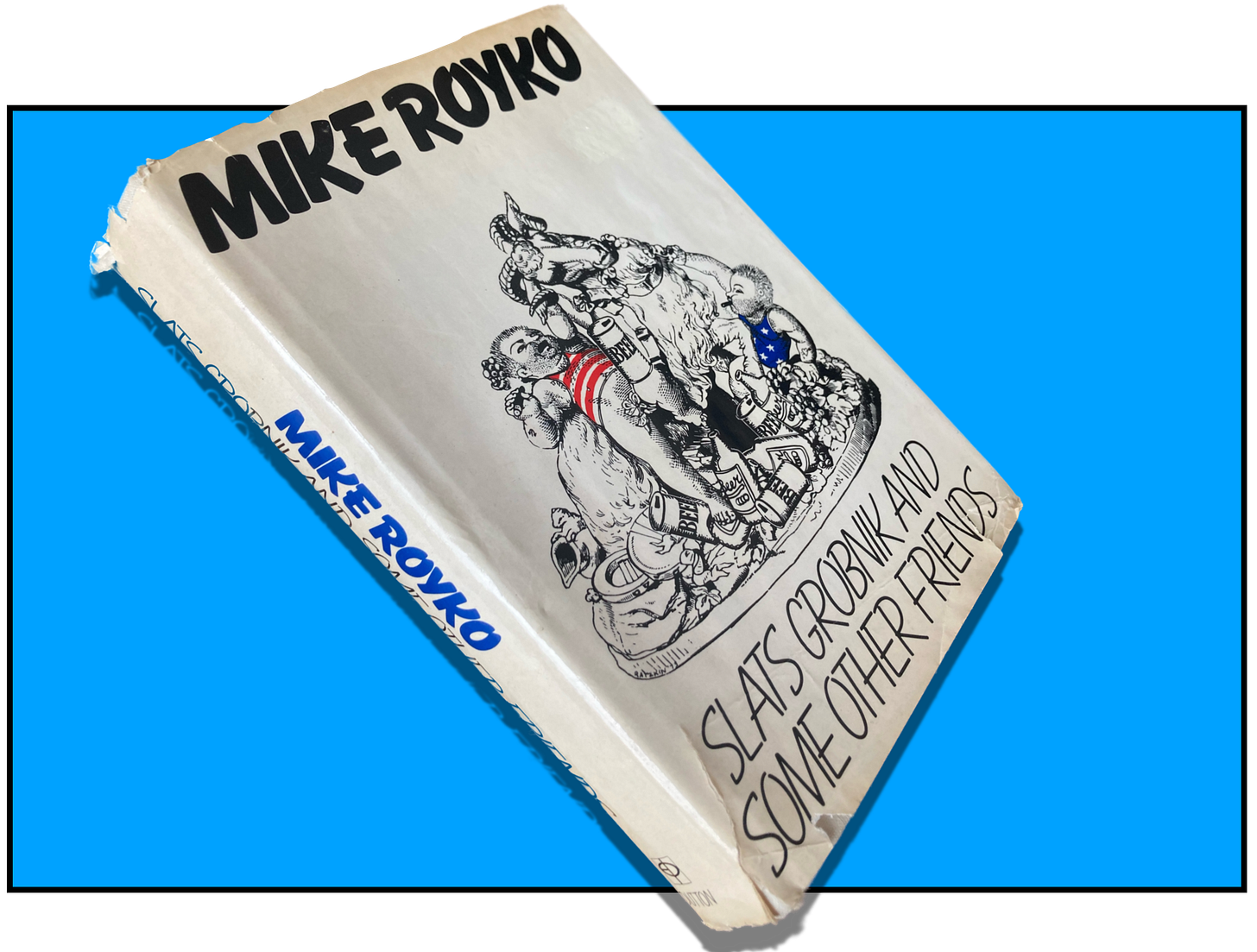






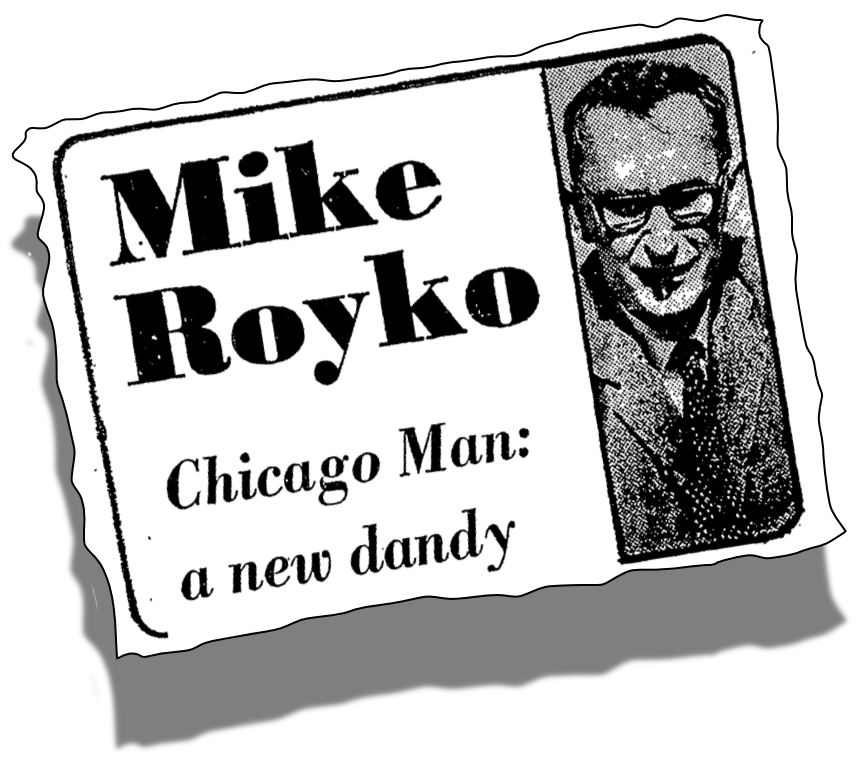



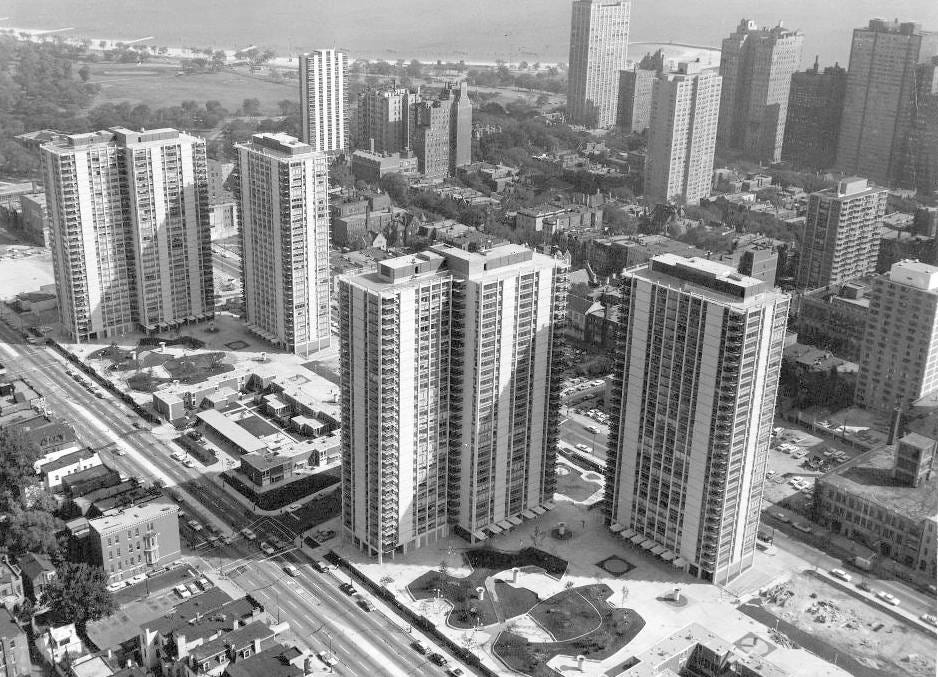





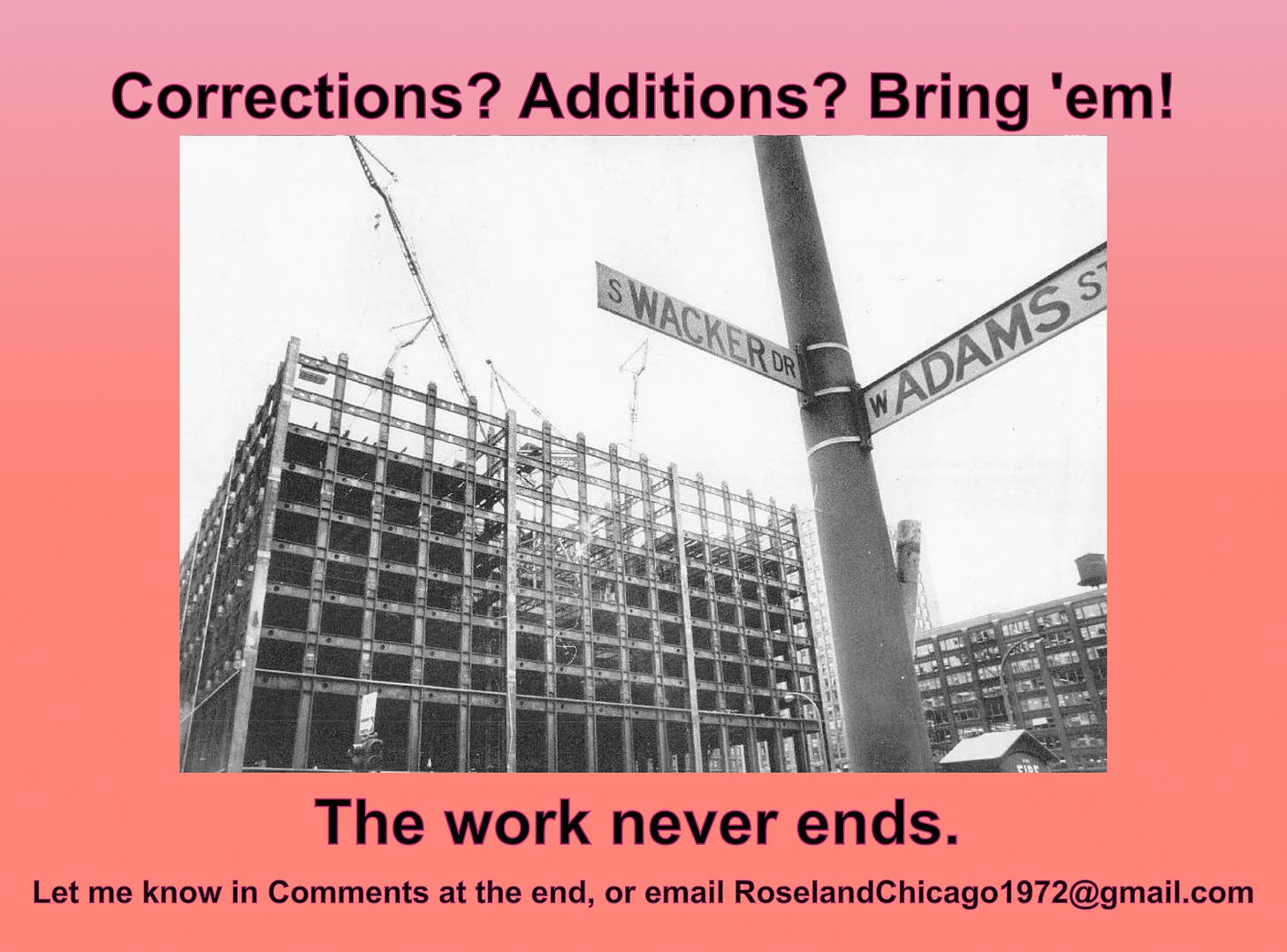


Wow! Love this. Great photos too.